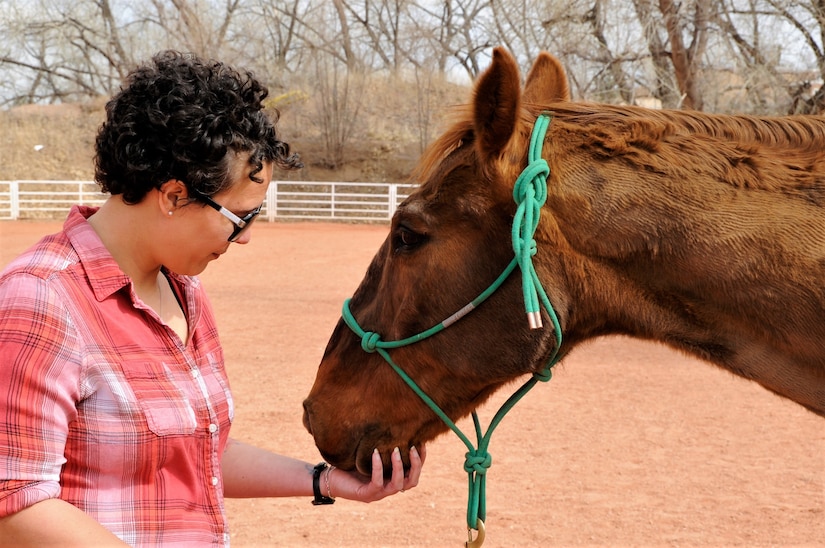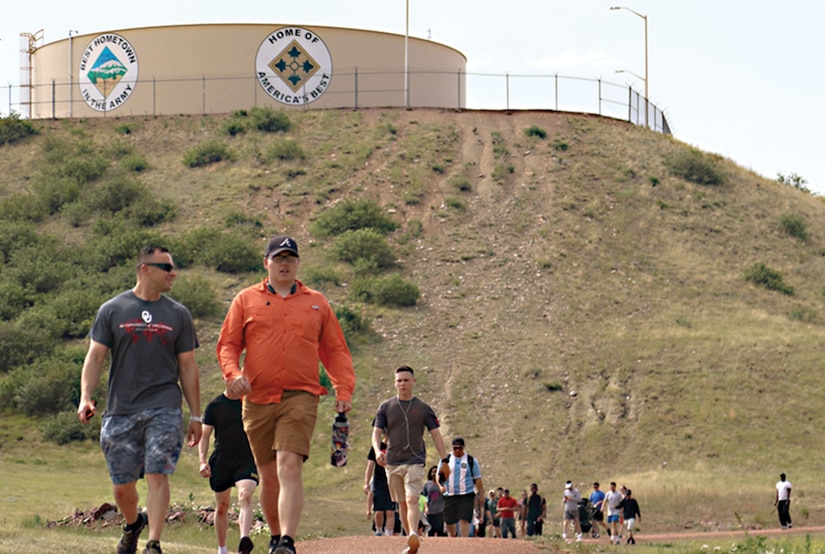By Air Force Staff Sgt. Frank J. Casciotta, 302nd Airlift
Wing
COLORADO SPRINGS, Colo. -- Air Force Tech. Sgt. Tanesha
Fierro, an aviation resource manager assigned to the Air Force Reserve’s 34th
Aeromedical Evacuation Squadron, spends one night a week at the Norris Penrose
Events facility here volunteering with an equine therapy program designed to
help veterans and active-duty service members overcome their post-traumatic
stress disorder by working with horses.
In 2016, Fierro was volunteering with a therapeutic riding
program for children with disabilities when she was approached by another
volunteer who asked her if she would be interested in a similar program working
with soldiers and airmen suffering from PTSD. “Any time there’s an opportunity
to help someone, I’m there,” she said. “I was just honored and excited to get
involved in another equine therapy class.”
During an equine therapy session, patients spend time
grooming and performing simple exercises with horses. As a volunteer, it’s
Fierro’s job to ensure the safety of both horse and patient.
“Horses are such special creatures,” Fierro said. “They can
sense if you’re hiding something, and people with PTSD seem to be guarded. The
horses pick up on that and won’t cooperate until that shield comes down, which
is what makes this so effective.”
Connecting With Service Members
As an Air Force reservist, Fierro brings a special dynamic
to her work with other service members and veterans.
“Given that we are working with soldiers, the fact that she
wears the uniform gives her instant credibility with them,” said Bill Reed, who
has been a volunteer with the program for more than a decade. “A few sessions
ago, there was one pretty tight-lipped fellow struggling with some of the
concepts. Well, she started working with him, and it turned out they had the
same job, except he was [in the] Army. Miles of his barriers fell down right
then. He got better after that.”
Though having a military background helps Fierro connect
with patients, Dr. Kelly Moss, a clinical psychologist who oversees the
sessions, also credits her temperament.
“She is always very calm, kind and even-tempered, which is
why I think she works so well,” Moss said. “That makes a big difference in
making an initial connection with patients.”
Fierro’s passion for horses started when she was a child
living at Royal Air Force Mildenhall, England. Her mother, who is British, took
Fierro with her to the stable, where she worked caring for horses.
“I think that’s where my nurturing side comes from,” Fierro
said of her mother. “My mother was such a caregiver, and some of that rubbed
off on me.”









